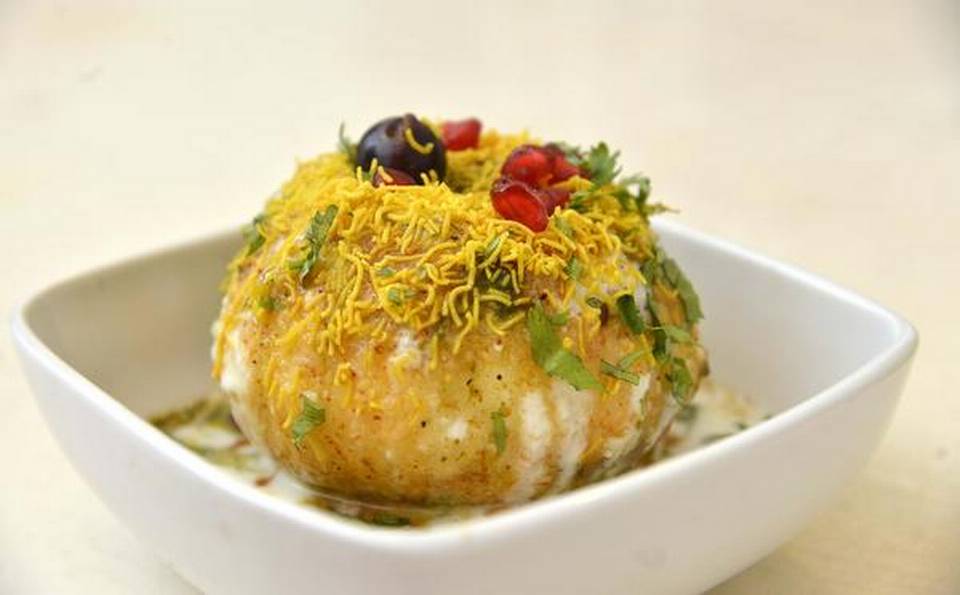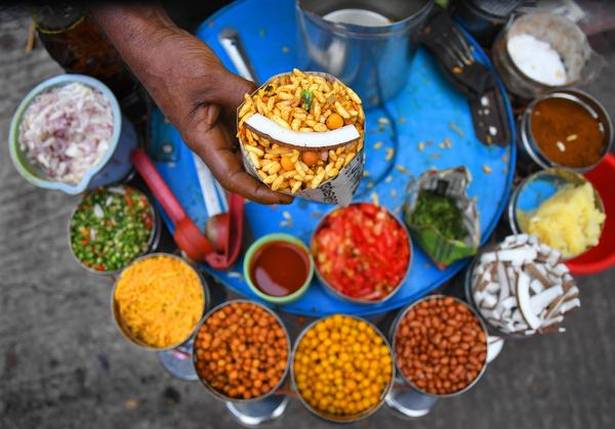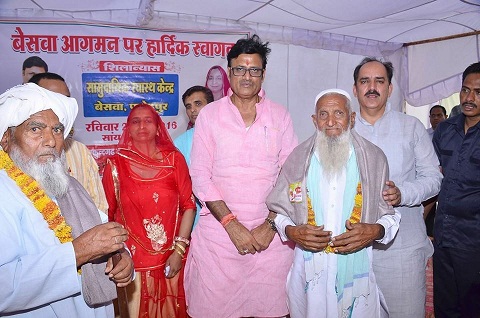Theories abound about the origin of chaat
There are those who say the word chaat originated from its literal meaning ‘to lick’. It was so delicious that people licked their fingers and the bowl made of peepal leaves, called donas, in which it is often served. Others think it originated from the term chatpati (tangy). However, no one truly knows the origin.
One story goes thus: During the reign of Emperor Shah Jahan, in the 16th Century, there was an outbreak of cholera. Desperate attempts were made to control it by physicians and sorcerers. One remedy suggested was to make food with loads of spices so that it would kill the bacteria within. Thus was born the spicy tangy chaat, which the entire populace of Delhi is believed to have consumed. A slight variant attributes it to the court physician called Hakim Ali, who realised that the foul water in a defunct local canal could result in serious water-borne diseases and thought the only way to prevent it was to add a liberal dose of spices — tamarind, red chillies, coriander, mint etc to the food. Hence, the food came to be called chatpati (tangy).
However, no one knows the veracity of these stories.
The grandmaster of history of our cuisine and food, KT Achaya, gives plenty of references to various ingredients and dishes which make up the repertoire of chaats. In his book, A Historical Dictionary of Indian Food, Achaya’s description of dahi vadas is interesting. He says the vadas were first mentioned in the Sutra literature of 500 BC. The Mânasollasa of the 12th Century talks of soaking vadasin milk, rice water or curd. Curd is also mentioned in the Vedas, and curd in Tamil literature is said to have been spiced up using pepper, cinnamon and ginger. Therefore, it may be conjectured that adding curd to the dahi vada and spicing it up with various chutneys and pomegranate seeds could be an ancient habit.
Achaya further writes of how papdi finds a mention in Mânasollasa in the 12th Century as purika. The description fits the present-day papdi which is fried crisp with the addition of cumin seeds and ajwain, using chickpea flour, maidaor wheat flour and not puris.
The use of rock salt or sendha namak and black salt with chaat is common. Alooor potato cubes, fried in oil, is spiced up using a combination of salts, which also have ancient origins. According to Achaya, Mahabharata refers to the use of rock salt or sendha namak and black salt. It is also mentioned in the Buddhist Vinaya Pitaka and by Charaka.
The tale of paani puri can be linked to chappatis. Achaya talks of how cave paintings show balls of dough being made, and how, in Harappan sites, flat metal and clay plates have been seen, which look like the modern-day tava. Hence, chappatis may have a long history, and so do puris.
The Sanskrit word pura, meaning blown up, could be the genesis of the name puris. He further describes puris and paani puris as, “tiny gol guppas, globular puris eaten during festivals or as a roadside snack in North India with a cold, fiery, pepper-mustard liquid concoction”.
Tamarind, whose water-soaked version is the mainstay of panipuris today, was grown in India in prehistoric times. Tamar-ul-Hindi — fruit of India — is how it was referred to by the Arabs and Marco Polo refers to it in 1298 AD as tamarindi.
In Indian Food: A Historical Companion, KT Achaya mentions Sādava from the Buddhist era, which connotes either a spiced fruit dish or a spiced fruit drink. Ginger, cumin and cloves make their way in the Buddhist era. The Aryan era talks of black pepper (maricha) and asafoetida (hing). Spicing up water including tamarind, and fruits was prevalent.
source: http://www.thehindu.com / The Hindu / Home> Life & Style> Food / by Chitra Balasubramaniam / February 07th, 2019











